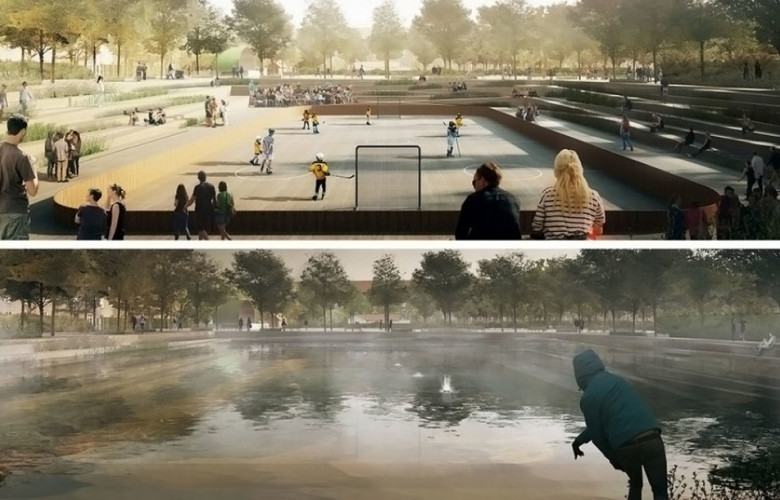Copenhagen shows how cities can prepare for flooding
Contact
Copenhagen shows how cities can prepare for flooding
Copenhagen is exploring ways to cope with higher rainfall.
Copenhagen was hit by once-in-100-years floods in 2011, and then again in 2014. With the effects of climate change already being felt, and more extreme-weather events likely, the city set about finding ways to better prepare for higher rainfall.
In our concrete-built cities, heavy rain is either channeled underground, or sits on the surface wherever it happens to pool, causing damage and chaos. Managing heavy rainfall means either directing the water underground, or finding ways to store it above ground.
In Copenhagen, landscape architects are designing parks and urban environments that are designed to flood. Heavy rain is held mostly above ground, where it can be used when needed.
Consultants Cowi, Tredje Natur and Platant have revealed plans for Enghave park with public spaces that can be used when it's dry, but can accommodate 24,000 cubic meters of water when heavy rain falls.
A dyke will surround the park, and will fill with water during heavy rain. That water can be used for flowerbeds and community gardens. Sports areas will be built below ground level, and can be used when it's dry, but will fill with water when it rains. An underground reservoir will also collect rainwater.
These above-ground solutions are said to be approximately half the cost of adapting underground sewer and drainage systems to cope with heavier rainfall.
Another park in Copenhagen, Tasinge Plads, has built flowerbeds that fill with water when it rains, and water storage facilities above ground to store water that can be used for the garden when it's needed.
And in Copenhagen's Saint Kjelds, asphalt has been torn up to make way for flowerbeds that turn into ponds during heavy rain, and cycleways convert to storm drains, chanelling water out to sea, rather than causing destructive flooding.





